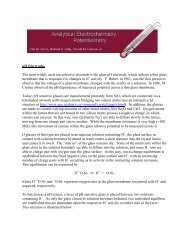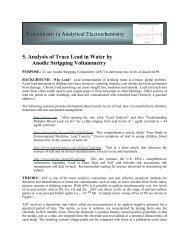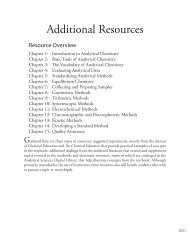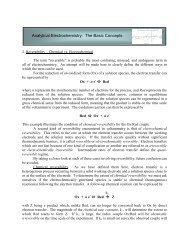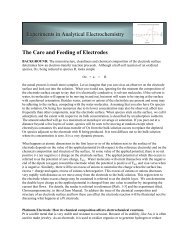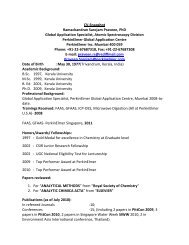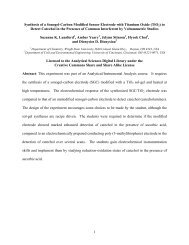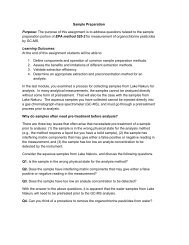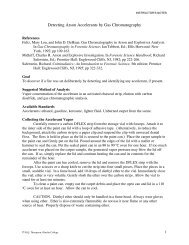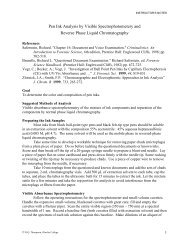Appendix
Appendix
Appendix
- No tags were found...
Create successful ePaper yourself
Turn your PDF publications into a flip-book with our unique Google optimized e-Paper software.
1084 Analytical Chemistry 2.0<strong>Appendix</strong> 6: Critical Values for Dixon’s Q-TestThe following table provides critical values for Q(a, n), where a is the probability of incorrectly rejecting thesuspected outlier and n is the number of samples in the data set. There are several versions of Dixon’s Q-Test,each of which calculates a value for Q ij where i is the number of suspected outliers on one end of the data setand j is the number of suspected outliers on the opposite end of the data set. The values given here are for Q 10 ,whereQ = Q = outliersvalue ' − nearest valueexp 10largest value−smallest valueThe suspected outlier is rejected if Q exp is greater than Q(a, n). For additional information consult Rorabacher,D. B. “Statistical Treatment for Rejection of Deviant Values: Critical Values of Dixon’s ‘Q’ Parameter and RelatedSubrange Ratios at the 95% confidence Level,” Anal. Chem. 1991, 63, 139–146.Critical Values for the Q-Test of a Single Outlier (Q 10 )a &0 n 0.1 0.05 0.04 0.02 0.013 0.941 0.970 0.976 0.988 0.9944 0.765 0.829 0.846 0.889 0.9265 0.642 0.710 0.729 0.780 0.8216 0.560 0.625 0.644 0.698 0.7407 0.507 0.568 0.586 0.637 0.6808 0.468 0.526 0.543 0.590 0.6349 0.437 0.493 0.510 0.555 0.59810 0.412 0.466 0.483 0.527 0.568



